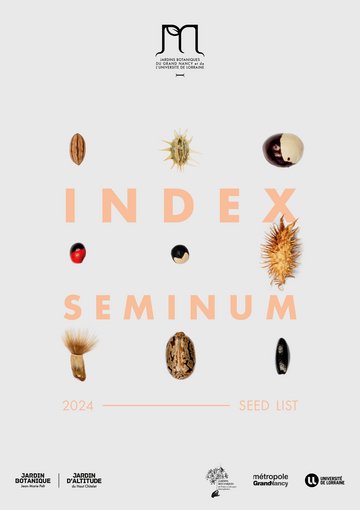Index seminum
Back
to
top
There is an international seed exchange system, free of charge and based on reciprocity. Seed catalogues or index seminum circulate annually between botanical gardens around the world. These exchanges are regulated and strictly reserved for botanical gardens. The Botanical Gardens of Grand Nancy and Université de Lorraine are, for example, part of a network of more than 800 correspondents throughout the world. They are also registered as a member of the International Plant Exchange Network (IPEN) and adopt a strict code of conduct in accordance with the Convention on Biological Diversity.

Seed-related activities are often unknown to the general public, but they nevertheless require a great deal of work. Identification, harvesting, checking the quality of the seeds, cleaning, packaging, shipping to correspondents and then receiving orders, and of course sowing, are fundamental tasks in the life of botanical gardens.
Thus, on average each year the Botanical Gardens of Grand Nancy and Université de Lorraine receive 1,400 batches of seeds and send back 2,000 to other botanical gardens.
The risks of hybridisation are considerable within a garden. Therefore, botanical gardeners always prefer seeds collected in the wild in order to enrich or complete the collections presented to the public.
An index seminum is therefore generally divided into 2 categories:
- seeds collected in the wild to guarantee genetic purity
- seeds collected in botanical gardens
Respecting the rules established within the network, perfect traceability is necessary. Indeed, seeds collected in Lorraine or in the Botanical Gardens of Grand Nancy and Université de Lorraine (in the greenhouses and outdoor collections of the Jean-Marie Pelt Botanical Garden and the Haut Chitelet High Altitude Garden) will circulate throughout the world and we must be able to provide our peers with all the useful information concerning these plants.
Collecting and exchanging seeds through an index seminum is therefore one of the essential missions of a botanical garden in order to present scientifically valuable collections within a network working for a better knowledge of plant diversity in compliance with the convention on biodiversity.


